Review for Shirobako Collection 1
Introduction
If you’re an anime fan, it probable that you’ve devoted some time to wondering how your favourite pastime gets created. After all, we all know how animation works. You create an image, photograph it, then create another image slightly different, photograph that, and you keep on doing that. Those photos shown in sequence at a fast enough rate will display motion if you’ve made the images right, a process we call animation. You need 24 images per second to fool the human eye into seeing motion on screen, which in a 25 minute episode of anime adds up to 36,000 images. You obviously need more than that in a movie, and seasons of anime can be 12, 24 or even more episodes long. Wikipedia lists 163 new anime for 2017 (not including ongoing shows like One Piece or movies). If you start doing the maths on that, it only seems reasonable that everyone of working age in Japan is employed drawing, painting, and photographing anime, as well as writing, editing, directing, voice acting, sound engineering and so on and so forth. In reality, all of Japan’s anime industry rests on the back of a far smaller percentage of the population.
Anime is also somewhat reticent to look under the covers, to reveal how the magic is made. Certainly we don’t get the same in-depth behind the scenes extra features on anime that we do on Hollywood productions, and what we do get tends to gloss over the drudgery of the process and the politicking of the production committees. The final place to turn for information for the anime fan is anime itself, what with the all-encompassing possibilities of the medium. But up till now, the only ‘definitive’ description of the anime production process came from a single episode of Paranoia Agent, Mellow Maromi, which was really a nightmare horror movie vision of anime production. Finally however, a few years ago studio P.A. Works gave us Shirobako, a whole series about anime, the second of their ‘girls at work’ trilogy between Hanasaku Iroha and Sakura Trick. For the last couple of years Shirobako is also one of the the top anime demanded by UK fans to be released here, although to date that hasn’t happened. I’ve instead imported the US Blu-ray release, which conveniently is playable on Region B players.
In high school, five girls worked together to create an anime film to show at the school culture festival. Aoi Miyamori, Ema Yasuhara, Shizuka Sakaki, Midori Imai, and Misa Todo together made a vow to work together on an anime feature film. Two and half years later, the five of them now live in Tokyo, each pursuing different paths to their dream. But the dream isn’t exactly what any of them expected it to be, especially for Aoi Miyamori, rookie production co-ordinator at Musashino productions, and now shouldering the responsibility of ensuring episodes of their ‘comeback’ production Exodus get out on time.
The first twelve episodes of Shirobako are presented on one Blu-ray disc from Sentai Filmworks.
1. Exodus Towards Tomorrow!
2. Arupin is Here!
3. I’m Sick of Recap Episodes!
4. I Totally Messed Up
5. Those Who Blame Others Should Just Quit!
6. Idepon Miyamori: Be Invoked
7. Retake by Cat
8. I’m Not Criticizing You, Okay?
9. What Do You Think I Was Trying To Say?
10. Just One More Glass, Okay?
11. The Little Key Animation Girl
12. Exodus • Christmas
Picture
Shirobako gets a 1.78:1 widescreen transfer on this disc, and despite 12 episodes plus extras encoded onto one dual layer Blu-ray disc, the show looks pretty good, with no signs of aliasing or compression, or even digital banding to my eyes. I’m sure given the Aniplex treatment, the show would look even crisper, but Sentai’s presentation is certainly better than I expected. Studio P.A. Works deliver another high quality show, with appealing and memorable character designs, with an eye on realism, animated with thoughtfulness against rich and detailed backgrounds. There is a bit of shimmer on fine detail though. However I only noticed it on distance shots of CG car grilles.
Sound
Shirobako gets a DTS-HD MA 2.0 Japanese Stereo track with locked English subtitles. The dialogue is clear throughout, the stereo soundstage gets a decent workout, even with a predominantly dialogue focused show, and there is some nice music to drive the story as well as some toe-tapping theme songs. The subtitles are accurately timed and free of typos, while on screen production notes are used sparingly but well to flag up all the in-jokes and references.
Extras
You get one disc in a slim BD Amaray style case. The content is presented with a static menu, and each episode is followed by a translated English credit reel.
In terms of extras, you get one textless opening, two textless closings, and trailers for La cordo d’oro – Blue Sky, HaNaYaMaTa, Locodol, and Tamako Market.
Conclusion
This always seems to happen to me. I buy a series, finally get around to watching it, start penning the review, and then someone in Japan announces a sequel or spin-off. P.A. Works has now announced that a Shirobako movie is in production. It’s the kind of thing that could drive an OCD completist up the wall. I will be praying that the Shirobako movie eventually gets an English territory licence, and a Region B friendly release, as I love the series; it’s just the kind of thing that I look for in anime, something unique and special.
Shirobako is an ode to the anime industry, a warm affectionate look at just how anime series are made, although it’s probably just as realistic as the Mellow Maromi episode of Paranoia Agent was, albeit coming from the opposite direction. Mellow Maromi was a nightmare look at anime; Shirobako is a more idealistic and optimistic look at anime creation. Reality lies somewhere in between, and there’s little mention made here about outsourcing overseas, about pittance pay, or about burnout inducing workloads, the sort of news stories that are a constant on the Anime News Network pages. Shirobako is anime production for the love of the craft, it’s the best face of the industry. Given that there’s enough drama to drive the story despite the rose-tinted spectacles that it’s wearing will probably make you wonder just how bad the industry really is.
Having created an anime for their school festival, five girls together made a promise to realise their dream of working on a professional anime. Shirobako catches up to them 2 and half years later. Aoi Miyamori now works at Musashino Animation as a production co-ordinator, while Ema Yasuhara is there as a key-animator, both of them relative rookies in their jobs. Misa Todo works at another company as a CG animator, while Shizuka Sakaki is an aspiring voice actress, working in a bar-restaurant until she gets her big break. Midori Imai is at college, trying to figure out how to become a writer. Some are closer to the dream than others, but as the series unfolds, it becomes clear that no-one’s road is smooth.
Musashino Animation has been in a slump, and Shirobako follows the company on the comeback trail, as they produce a surprise success, the original anime Exodus. Its director too, Seiichi Kinoshita is trying to salvage his reputation after his previous anime went off the rails. It’s a high pressure gamble that demands the best from the small company, and these 12 episodes cover the majority of Exodus’ production. Naturally given that, the focus is more on Aoi and Ema’s arcs, although we do see plenty of Shizuka’s troubles at auditions. There’s an episode or so where we learn Misa’s frustration at the conveyor belt process of CG animation (she’s been assigned wheels and tyres), and the lack of creativity open to her, while it takes a good age before Midori gets her foot in the anime industry door.
It’s the universal lesson at the heart of Shirobako for the protagonists, that a hobby is not synonymous with a career. Even if you enjoy something, inevitably the shine will go off it. With Aoi, it’s the distance from the creative process. As a production co-ordinator, her role is essentially office staff. She’s there to make sure all the pieces fit together, and do so, on schedule. She needs to get storyboards from the director, key animation, animation checks, in-betweening, ADR, foley, edit, colouring, the entire schedule from beginning to end of an episode’s production, all in the right order, and all on time. That means HR skills, a lot of running around, and a lot of phone calls. Inevitably, Aoi realises just how separate she actually is from the creative process, and she begins questioning her dreams and ambitions.
A similar thing happens to Ema, who thought she had her dream job of key-animation, but thrown in a room full of seasoned professionals, she quickly loses confidence, and is stressed by the expected requirement that a key animator be both accurate and fast. She also has to draw what the episode requires, not just what she is good at. The series follows them as they work through their issues, and rediscover the motivation that drew them to anime in the first place.
All of that makes Shirobako sound like a dry examination of the industry, but in reality it’s anything but. Shirobako is a light comedy drama, with a host of colourful characters and entertaining situations, not least helped by the in-jokes and references. When we first see Miyamori at work at Musashino, she’s driving between locations, and winds up drift-racing through the streets against a rival studio’s driver. Just like Paranoia Agent used Mellow Maromi to explain what was happening in the episode, there are a couple of mascot characters here, an eye-patch doll and a teddy bear who together serve as Miyamori’s inner voice.
The production team also has comic relief in the form of Captain Tactless, Taro Takanashi, while Erika Yano is quick to smack some sense into him. The difficulty of getting storyboards on time becomes a running gag in the show, with one producer resorting to locking Kinoshita in a cage with a pencil and pad until he delivers. Shizuka raises eyebrows on a train by rehearsing for an audition. It turns out that the dub vs. sub argument is nothing compared to the battle-lines drawn between 3D and 2D. Shirobako is as entertaining as it is informative, and it really is informative.
If Shirobako has a problem, it’s with sheer character overload. It’s the nature of the beast of course, the typical anime production comprises hundreds of people, dozens of companies, complex production committees, and that is reflected by the number of faces that we see in the show. Even if their names and roles are captioned regularly, especially in the earlier episodes, it’s information that isn’t easy to hold onto. But Shirobako tells a unique story, and more importantly tells it well. It may not be an absolutely realistic view of the industry, but it feels honest and accurate to a degree. To think, every series that we get to watch has a journey to production like this. It boggles the mind. Shirobako is an essential series for every anime collection.

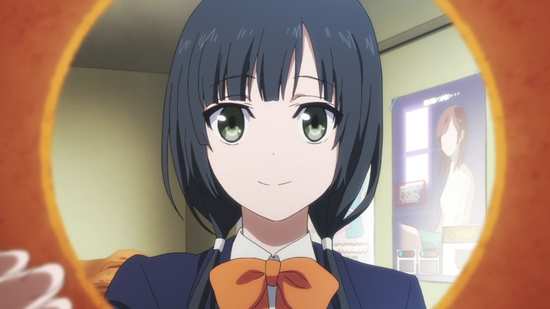
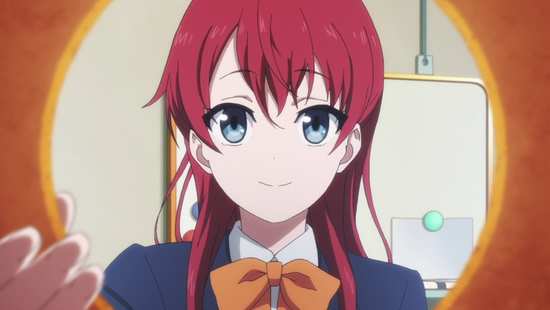
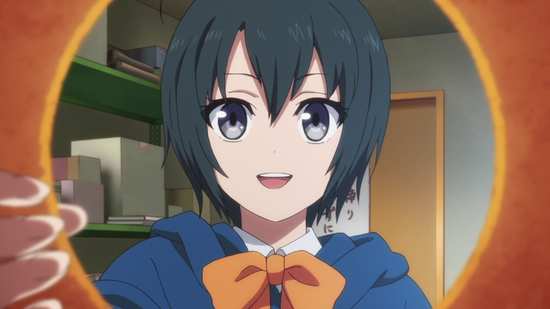
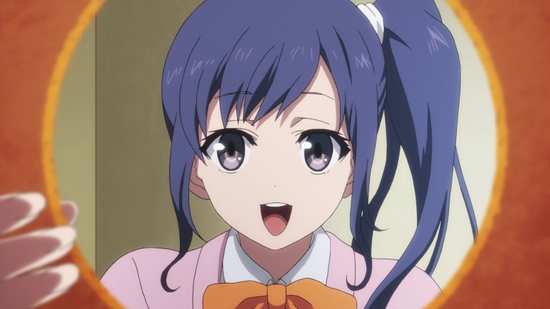

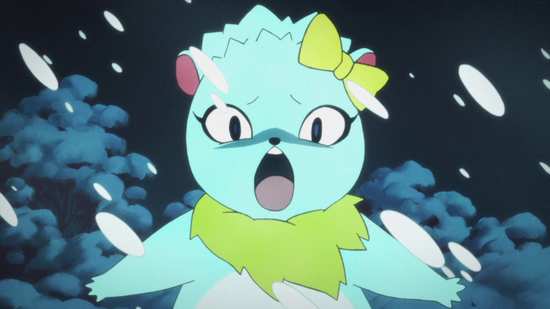
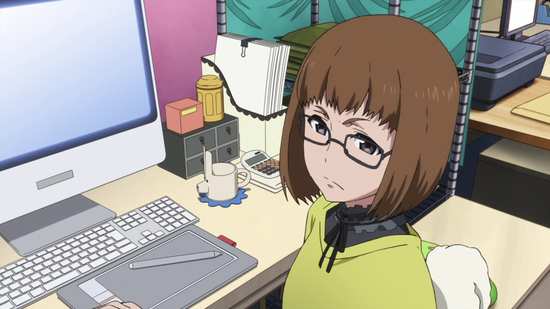
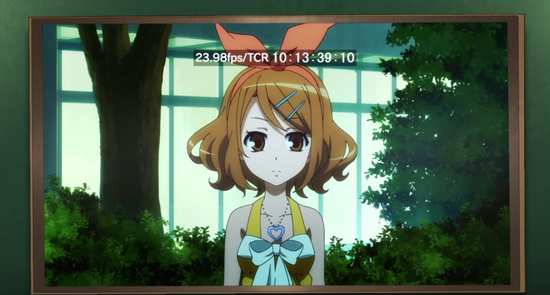
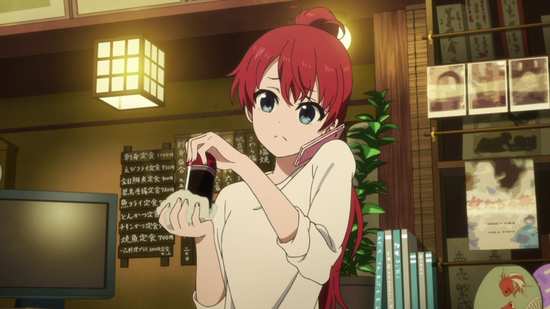
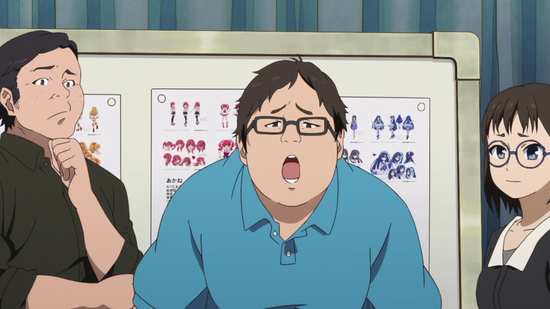

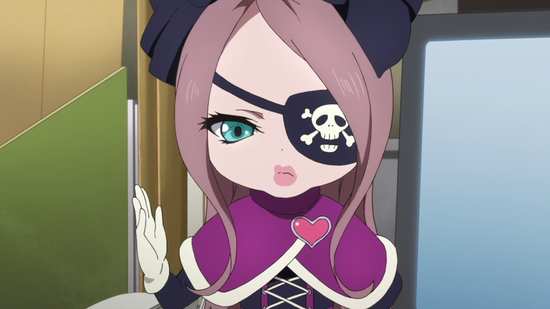
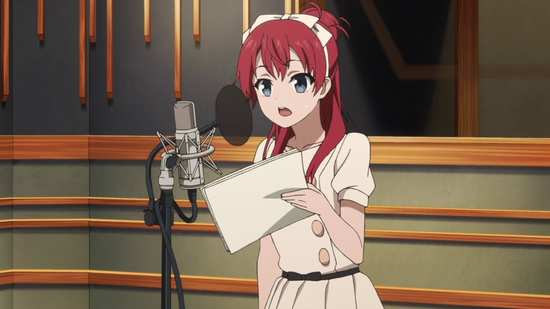
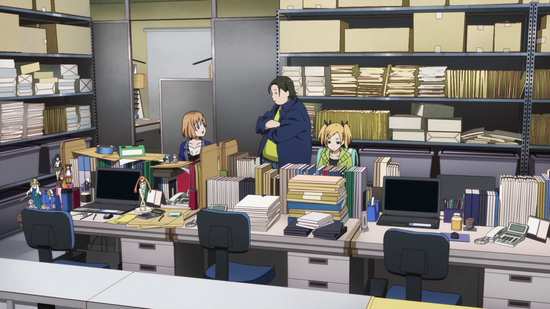
Your Opinions and Comments
Be the first to post a comment!